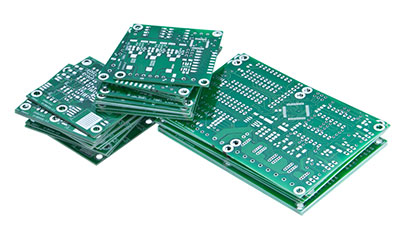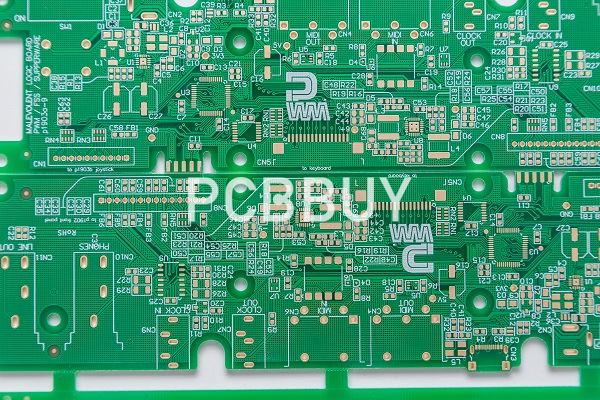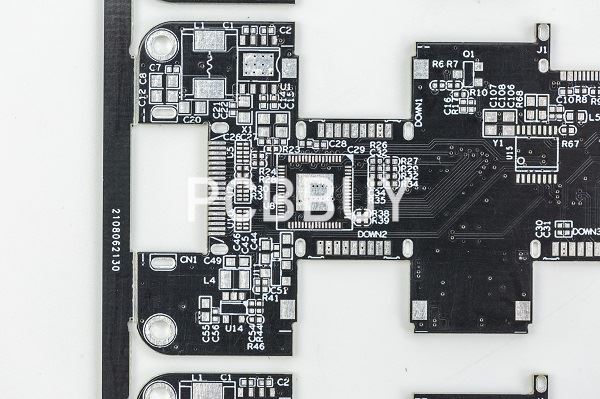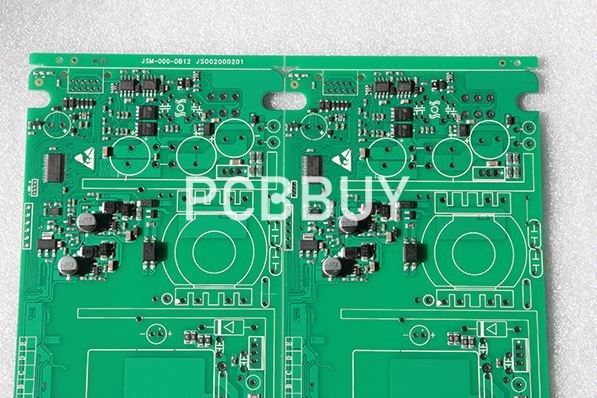What is standard PCB thickness?
By:PCBBUY 05/17/2021 17:54

Among all the parameters of PCB, the thickness is a very essential factor. Since the thickness of a PCB affects a lot including the functionality, conductivity and eat resistivity. And in this passage we are talking about every detail of standard thickness of PCB. Please check the content below and we will get started.
What is standard PCB?
Standard PCBs use a dielectric and copper as their most prominent metal consist of different layers of material. They feature a substrate, or base, made from fiberglass, polymers, ceramic or another non-metal core. Many of these PCBs use FR-4 for the substrate. This fiberglass material has a relatively affordable price and moderate durability. Additional layers of copper, solder mask and silkscreen make the board conductive and outline component locations. These layers may appear on one side of the base, both sides or in a multilayer stackup.

You can find standard PCBs used in a nearly infinite number of applications. Their capabilities depend on their materials and construction, so they power low-end and high-end electronics alike. Single-sided PCBs appear in less complicated devices such as calculators, while multilayer boards have the potential to support space equipment and supercomputers.
What is standard PCB thickness?
Generally, with PCB thickness, the application or usage area determines how thick the board will be. The thickness ranges from 0.008 inches to 0.240 inches, there are thin Layer PCBs, but the standard or industrial standard PCB thickness is 0.063inches (1.57mm). There is the historical explanation for that specific size, in the beginning; with the development of Circuit Boards which were made of Bakelite sheets.
The thickness became an essential part of the circuit board when multiple layer Electronic boards started to emerge. With the multiple layers, the need for a mode of connection between layers was evident, and copper was used for that on the plate edges. The thickness of the connectors between the boards had to match, and that became the standard PCB thickness.
Standard PCB board thickness
The board thickness is always based on both the insulating material and the top layer material; at the beginning of Circuit boards, this would be Bakelite sheet included as the top layer of the plywood at the end the total thickness of the board would lead to 0.065inches.
Standard PCB copper thickness
The Copper thickness plays a vital role on how you select a PCB thickness with the copper thickness measured in ounce per area square foot.

Usually, the Printed Circuit Board is around 1 oz with 1.4 mm to 2.8mm thickness for the internal layer, at the end; the finished weight would be about 2 oz to 3oz which can be adjusted based on your preference.
Standard PCB trace thickness
When you talking about Trace thickness of a PCB board, you are talking about the preferable thickness decided by the designer during the design process, the most used trace thickness ranges from 0.008 inches to 0.240 inches with particular attention paid to 0.2 mm, 0.4 mm, 0.5 mm, 0.6 mm, 0.8 mm, 1.0 mm, 1.2 mm, 1.5 mm, 1.6 mm, 2.0 mm, 2.3 mm.
Standard PCB core thickness
When we are talking about core thickness, we are talking about a layer of FR4 with copper on either side that are manufactured in a core factory. Smooth Copper foils with specific thickness are used to form the layer of FR4.

With Core thickness you have to also look at Pre-preg, this is a fiber weave impregnated with a resin bonding agent made by PCB manufacturers to stick together etched cores. Pre-preg is a thin layer of uncured FR4 that varies with the height of the etched boards either side of it.
The Core is thick fiberglass known for its layer rigidity while the Pre-preg is a thin layer of fiberglass that is used to laminate the core.
When the thickness requirement is not met, the customer may not notice it as long as the PCB board works “fine” as the PCB core materials used may not be critical to performance.
PCBs of now though, have performance has an important factor, and the thickness always needs to be precise for the best possible functionality of the board, so the designer always needs to communicate the precise requirements to the fabricator in proper documentation.
How to custom PCB thickness?
Sheets or panels used for manufacturing PCBs are easily available in the market. There are various customization options that offer designs and thicknesses as per your specifications and needs. You can pick the thickness range from 0.2mm to 6.3mm in millimeter increments of a hundredth. Read further to find out factors that must be supervised while opting for a customized PCB board thickness.
Industry Category











